Contents
CHAPTER 1
Law – Introduction
1.1 Law – Meaning 1
1.2 Kinds of law 2
1.3 Supreme legislation 2
1.4 Subordinate legislation 2
1.5 Referential legislation 2
1.6 Judge-made law 2
CHAPTER 2
Statutory Law – Supreme Legislation
2.1 Supremacy of Parliament 4
2.2 Power of legislature subject to constitutional limits 4
2.3 Taxation, a prerogative of legislature 4
SUBORDINATE LEGISLATION
2.4 Subordinate legislation – Necessity 5
2.4.1 Valid delegation of legislative power – Tests 6
2.4.2 Subordinate legislation – Guidelines 6
2.4.3 Subordinate legislation – Legislative Control 8
2.5 Subordinate legislation – Extent and limits of delegation 11
2.6 Subordinate legislation – Powers of rule making authorities 12
2.7 Rules have effect as if enacted in the Act 13
2.8 Rules are mandatory 13
2.9 Rules interpretation 14
REFERENTIAL LEGISLATION
2.10 Referential legislation – Convenient legislative device 15
2.11 Referential legislation – Kinds of 16
2.12 Referential legislation – Effect of repeal, modification or
amendment of 18
RAG-BAG LEGISLATION OR COMPOSITE LEGISLATION
2.13 Rag-Bag Legislation – Legislative competence 19
CHAPTER 3
Judge-Made Law Rule of Precedents
3.1 Legislature – Delegation of responsibility to courts to make law
through interpretative process 21
3.1.1 Judges not only declare but also make laws 22
3.1.2 Supreme Court and High Courts’ decisions – As important
as statutes 24
3.2 Interpretation is fundamental role of a Judge 25
3.3 Judicial Interpretation to Adapt Law to Suit the Needs of Society 25
PRECEDENTS – MEANING AND SCOPE
3.4 Doctrine of Precedent 27
3.4.1 Ratio Decidendi 28
3.4.2 Obiter Dicta 31
3.4.3 Judicial Dicta 32
RULES OF PRECEDENTS
3.5 Precedent provides a Guide as to Future Course of Law 32
3.6 Precedents binding – Reasons 33
3.6.1 Stare decisis- Long Standing precedents 33
3.7 Precedents – Guidelines 34
EXCEPTIONS TO RULE OF PRECEDENT
3.8 Precedent – Decision given in per incuriam not binding 36
3.9 Precedent – followed not mechanically 39
3.10 Every observation not to be followed 40
3.11 Precedent – Sub Silentio 41
CHAPTER 4
Law – Constitutional Validity
4.1 All laws flow from Constitution 44
4.2 Constitutionality of provisions – Principles of interpretation 45
4.2.1 Constitution – Interpretation 45
4.2.2 Aspect doctrine 49
4.3 Reading down an enactment 51
4.3.2 Construction to maintain constitutionality 52
4.3.3 Constitutionality – Presumptions 53
4.3.4 Constitutionality – Judged from the generality of the
provisions of an Act 54
4.4 Constitutionality – Subordinate legislations 55
CONSTITUTIONALITY – COMPETENCE OF
PARLIAMENT TO ENACT LAWS
4.5 Legislative competence to enact laws – Articles 245 and 246 of
the Constitution 56
4.6 Power of legislation and list of legislation 56
4.7 Power of Parliament to enact laws – Limitations 58
4.9 Judicial review 59
4.10 Legislative competence – Pith and substance of a statute 59
4.11 Colourable Legislation – Constitutionality 61
4.12 Competence of Parliament to impose taxes 62
CHAPTER 5
Interpretation – General Principles
5.1 Interpretation/Construction – Meaning 63
5.2 Statute not drafted with divine prescience 63
5.3 Statutory construction – an exercise in legal reasoning 64
5.4 Interpretation – General observations 64
5.5 Three rules for interpretation 67
5.6 Rules of construction not the rules of law 69
5.7 Ascertainment of Legislative Intention – Sources 71
CONSTRUCTION – SCOPE AND EFFECT OF STATUTE
5.8 Rules of construction – Scope and Effect of the statute 73
5.9 Construction – Internal and external aids 75
CONSTRUCTION – STATUTE READ AS A WHOLE
5.10 ex visceribus actus – Within the four corners of the statute 76
5.10.1 Understanding of real meaning 78
5.10.2 Statute should be read as a whole even when language
is clear and explicit 79
5.10.3 Textual interpretation should match the contextual 80
5.10.4 Statute must be read as a whole – In case of conflict 81
5.11 Summing up – Rules of interpretation (construction) of statute 82
5.12 Statutory text and intention of the Parliament 84
CHAPTER 6
Interpretation of Words – Contextual
6.1 Contextual interpretation of words 86
6.2 Meaning of words be derived from the context 87
6.3 Shorn of context – Words are slippery customers 89
6.4 Context – which it means 90
6.5 Same word in different enactment 91
6.6 Same words in different places in the same section or statute 92
6.7 Words in social welfare legislation 93
6.8 Words have not only meaning but also contents 93
6.9 No word has absolute meaning and defined without reference
to context 94
6.10 Words speak for themselves concept has been exploded 96
6.11 Meaning of sentence may be more than of the separate words 97
CHAPTER 7
Interpretation – Sententia legis
7.1 Sententia legis – The intention of the Legislative statute repository
of legislative will 98
7.2 Intention of the legislation a slippery phrase 99
7.3 Actual and implied intention of parliament – ascertainment of 101
7.4 Intention gathered from social conditions and the mischief to
be remedied 102
7.5 Primary and secondary statutory intention 104
CHAPTER 8
Interpretation – Casus Omissus
8.1 Casus omissus 107
8.2 Casus omissus supplied in case of necessity 108
8.3 Judges to expound and not legislate in providing casus omissus 109
CHAPTER 9
Interpretation – Ongoing Act
9.1 Interpretation of Ongoing Act 111
9.2 Law never reaches consistency as man’s concept of state
changes over years 115
9.3 Law cannot remain immutable as society changes 116
9.4 Laws used as an instrument of distributive justice 117
CHAPTER 10
Interpretation – Literal rule
10.1 Literal rule 119
10.2 Literal construction – when words are plain and unambiguous 121
10.2.1 Plain meaning – judicial disagreement 122
10.2.2 Plain and unambiguous meaning – a delusion 122
10.2.3 Plain and unambiguous meaning — No extrinsic aid for
construction 123
10.2.4 Plain and unambiguous – given effect irrespective of
inconvenience or hardship 123
10.3 Literal construction — Corollary to the general rule – Nothing
added or taken from and nothing surplusage 124
10.4 Literal rule deviated – in case of ambiguity, absurdity and injustice 125
10.5 Ambiguity – Meaning and scope 125
10.6 Absurd result 126
10.7 Ridiculous and harsh is not the legislative purpose 127
10.8 Literal rule—Summing up 128
10.9 Literal interpretation – Not to be followed slavishly as to stultify
the manifest purpose 129
LITERAL INTERPRETATION – TERMS, EXPRESSIONS
AND TECHNICAL WORDS
10.10 Literal interpretation – Terms and expressions 129
10.11 Words of legal import 131
10.12 Words in a general statute – popular meaning 131
10.13 Ordinary and natural meaning of words 132
10.14 Standard test for ascertaining meaning of words in common parlance 133
10.15 Expressions used in trade and industries 133
10.16 Expressions in popular sense and not in technical sense 134
10.17 Literal or dictionary meaning 136
10.18 Composite expressions are not to be interpreted with the aid of
dictionary 138
10.19 Dictionaries meaning may sometimes be diffused 139
10.20 ejusdem generis 140
10.21 Distributive construction (plurals are broken into component
singulars) 140
CHAPTER 11
Purposive Interpretation vis-à-vis Literal
Interpretation
11.1 Introduction 142
11.2 Purposive and mischief rule 143
11.3 Purposive interpretation 144
11.4 Purposive interpretation to resolve ambiguity – Parliament never
intends to enact ambiguity 145
11.5 Purposive interpretation – Essence 146
11.6 Purposive approach means purposive construction of statute 147
11.7 Purposive interpretation – Undue importance not given 149
11.8 Purposive interpretation not applied when the Act has been
amended from time to time 149
11.9 Purposive and literal approach combined 149
11.10 Reading down meaning of words 150
11.11 Purposive interpretation and tax laws 150
Principles summarised 153
CHAPTER 12
Interpretation – Golden rule (Meaning modified)
12.1 Golden Rule – Literal meaning modified 155
12.2 Words presumed to be correctly and exactly used and interpreted
contextually 155
12.3 Violence to the language used 157
12.4 Omissions and gaps supplied 158
12.5 Meaning of the word may be extended 158
12.6 Arm Chair Rule – Judges stepping into shoes of legislatures 159
12.7 Judicial legislation 160
12.8 Court’s competence in supplying omissions 161
CHAPTER 13
Interpretation – Mischief Rule (Heydon’s case)
13.1 Mischief Rule – Heydon’s case 164
13.2 Ironing out the creases 168
CHAPTER 14
Interpretation – noscitur a sociis
and ejusdem generis
14.1 noscitur a sociis – a word is judged by the company it keeps 170
14.2 ejusdem generis 173
14.3 Genus – Narrower than the words it regulates 174
14.4 Ejusdem generis – Aid to construction 174
14.5 ejusdem generis – Non-application if defeats the intention of
legislature 175
CHAPTER 15
Interpretation – Taxing statute
15.1 Interpretation – Taxing Statutes General Observations 176
15.2 Interpretation of taxing provisions – Principle 178
15.3 Taxing statutes – Strict Interpretation 179
15.4 Taxing statutes – Doctrine of equity 180
15.5 Strict interpretation does not rule out reasonable construction 181
15.6 Strict interpretation charging section of income-tax Act 182
15.6.1 Tax not to be charged by inference or analogy 184
15.6.2 Taxing provision – Construction in favour of the subject
in case of ambiguity 185
15.7 Tax Avoidance – Strict interpretation 186
15.8 Penal provisions – Strict interpretation 187
15.9 Limitation provisions – Strict interpretation 192
15.9.1 Limitation bars the remedy but does not extinguish
the debt 194
15.9.2 Limitation cessation or remission of statutory liability 195
15.9.3 Proceedings barred by limitation not revived by amending
provisions 196
15.10 Exception clause – Strict interpretation 196
15.11 Form or substance of a transaction – Strict interpretation 198
15.12 Doctrine of substance of the transaction – meaning and scope 200
15.13 Form or legality of the transaction 203
15.14 Doctrine of ‘fiscal nullity’ 206
CHAPTER 16
Interpretation – Liberal
16.1 Liberal interpretation 208
16.2 Liberal construction – welfare legislation 208
16.3 Liberal interpretation – Beneficial provisions 210
16.4 Liberal construction – Exemption provisions 212
16.5 Liberal versus literal construction 214
16.5.1 Literal or liberal construction yields way to reasonable
construction 214
16.6 Liberal construction – to make a provision effective and operative 217
CHAPTER 17
Interpretation – Internal Aids
17.1 Internal aids 222
INTERPRETATION – PREAMBLE AND TITLE
17.2 Preamble 222
17.2.1 Preamble Key to the understanding of a statute 222
17.2.2 Preamble – Disregarded where the language is clear 224
17.2.3 Preamble – Application, two classes of cases 224
17.2.4 Preamble followed by a long title 224
INTERPRETATION – MARGINAL NOTES FOR HEADINGS
17.3 Marginal notes not referred for construction 224
17.3.1 Marginal notes – Legislative and not editorial exercise
indicating drift of the section 225
17.3.2 Heading is a clue to understanding section 225
DEFINITION – PURPOSE AND FUNCTIONS
17.4 Definition 226
17.5 Definition – Types 226
17.6 Definition – function 227
17.7 Definition clause – Ordinary meaning not taken away 228
17.8 Definition clause – Interpretation 228
17.9 Referential definition 230
17.10 Referential provision – Interpretation 231
17.11 “So far as may be, apply”, “as far as applicable” 233
17.12 Definition clause – Some qualifying expressions 233
17.12.1 ‘Unless the context otherwise requires’ 234
17.12.2 ‘In relation to’ 235
17.12.3 ‘Means’; ‘includes’ 236
17.12.4 ‘Includes and means’ or ‘deems’ 239
17.12.5 ‘Deemed’ 240
17.12.6 Purpose 240
17.12.7 ‘For the purpose of’ 241
17.12.8 ‘For the purpose of business’ 241
17.12.9 ‘Any’ 242
17.12.10 ‘Where’, ‘when’, ‘if’, ‘etc.’ 242
17.12.11 ‘Hereafter’ 243
17.12.12 ‘Wholly’ 243
17.12.13 ‘Similar’ 243
17.12.14 ‘Liable’ 243
17.12.15 ‘As the case may be’ 243
17.12.16 ‘So far as may be’ 243
17.12.17 ‘Without prejudice’ 243
17.12.18 ‘In the prescribed manner’ 244
17.12.19 Notwithstanding 244
17.12.19a Two Non Obstante Clauses—Generalia Specialibus
Non Derogant 247
17.12.20 Otherwise 250
17.12.21 Subject to 250
17.12.22 Namely or “that is to say” 251
17.12.23 So far as may be, apply 251
17.12.24 Law for the time being in force 252
17.12.25 Reasonable cause 252
CHAPTER 18
Interpretation – Internal aids Setting of the Act
18.1 Interpretation – Sections and sub-sections 254
PROVISO—FUNCTION AND INTERPRETATION
18.2 Proviso – Function 255
18.2.1 Proviso – construction 256
18.2.2 Proviso – An independent provision 257
18.2.3 “Provided further” 258
18.2.4 Proviso – whether refers to the last or all paragraphs 259
EXPLANATION – FUNCTIONS AND INTERPRETATION
18.3 Explanation — Function 259
18.3.1 Explanation is not amendment provision 260
18.3.2 Explanations not a substantive provision 260
18.3.3 Explanation – Effect and intendment 261
18.3.4 Explanation – Construction 262
EXCEPTION – INTERPRETATION
18.4 Exception 263
SCHEDULE INTERPRETATION
18.5 Schedule 263
PUNCTUATION – PURPOSE AND FUNCTION
18.6 Punctuation 266
18.6.1 Comma 267
18.6.2 Semi-colon 268
18.6.3 Colon and dash 269
18.5.4 Full stop 270
18.5.5 Parentheses 270
CHAPTER 19
Interpretation – Rule of Language
19.1 Rules of Language 271
RULE OF LANGUAGE – MANDATORY OR DIRECTORY
19.2 ‘May’ and ‘shall’ directory or mandatory 271
19.2.1 Simultaneous use of ‘May’ and ‘shall’ 274
19.3 Mandatory or directory depends on intention of legislature 274
19.4 Mandatory – Use of word ‘shall’ not conclusive 275
19.5 “Shall” and “may” – Inter-changeable 275
19.6 Factors other than use of “shall” or “May” taken into account 276
19.7 Negative or prohibitive word mandatory 277
19.8 Provisions for performance of a duty – rarely mandatory 278
19.9 Provision pertaining to avoidance of public mischief not mandatory 279
19.10 Procedural rule not mandatory 279
19.11 Mode of performing a duty has to be mandatorily followed 282
19.12 Conditions of a provision should be mandatorily followed 282
19.13 Whether all conditions mandatory 283
19.14 Prescription of time-frame for the act to be done not mandatory 284
19.15 Requirement of filing declaration or audit report along with return
of income-tax directory 285
19.16 Rules are mandatory 286
19.17 Non-compliance of mandatory provisions – Consequence of 286
RULE OF LANGUAGE – LEGAL FICTION
19.18 Legal fiction 287
19.19 Legal fiction – strictly construed 289
19.20 Legal fiction – all facts on which it operates assumed 290
19.21 Legal fiction – casus omissus not supplied 290
19.22 Legal fiction – illustrative cases 290
RULE OF LANGUAGE – RETROSPECTIVELY
19.23 Retrospective operation 292
19.24 Retrospectivity, legislative intent no fixed formula 294
19.25 Retrospectivity – legislative power limitations 294
19.26 Retrospectivity-expressly mentioned or be implied 295
19.27 Retrospectivity presumption against 295
19.28 Retrospective or prospective – Tests 296
19.29 Retrospectivity – law of procedure or substantive law 297
19.30 Procedural law and substantive law 298
19.31 Retrospectivity – Amending Acts 299
19.32 Retrospectivity – declaratory act 300
19.33 Retrospectivity – Clarificatory act 302
19.34 Clarificatory and declaratory acts – distinction between 305
19.35 Retrospectivity – repealing, repealed Act 305
19.36 Implied repeal 307
CHAPTER 20
Interpretation – External Aids
20.1 External aids – Meaning 309
20.2 External aids – Dictionary Meaning 309
20.2.1 Dictionary meaning – Overriding reasons to justify departure 310
20.2.2 Dictionary meaning – Sometimes diffused 311
20.3 External AID – Reference to other acts 311
20.3.1 External aids – References to statutes pari materia 313
20.3.2 Incorporation/reference of other Acts in the statute 314
20.4 External aid – Reference to General Clauses Act 315
20.5 External aid – Reference to complementary statutes 315
20.6 Words in popular sense 316
20.7 Words having scientific or technical meaning and also having
an ordinary meaning 318
20.8 General words 318
20.9 Words dealing with matters relating to general public 318
20.10 Words used in Income-tax Act 319
20.11 Words used in the schedule, notification for exemption 319
20.12 ‘Expression’, meaning of – What is legal and not what is right 321
20.13 External aids – Process of legislation 321
20.14 External aids – Subsequent legislation 322
20.15 External aids – History of Legislation 323
20.16 External aids – Objects and Reasons 325
20.17 External aids – Speech of the Minister 328
20.18 External aids – Parliamentary Material 329
20.19 External aids – Law Commission Report 330
20.20 External aids construction – contemporanea expositio (the
administrative) 330
CHAPTER 21
Maxims and Proverbs
21.1 Maxim – Statement of guiding principle 332
21.2 Maxim is empiric 332
21.3 Maxim or proverb – not unalterable if the context requires 334
21.4 Maxims explained 334

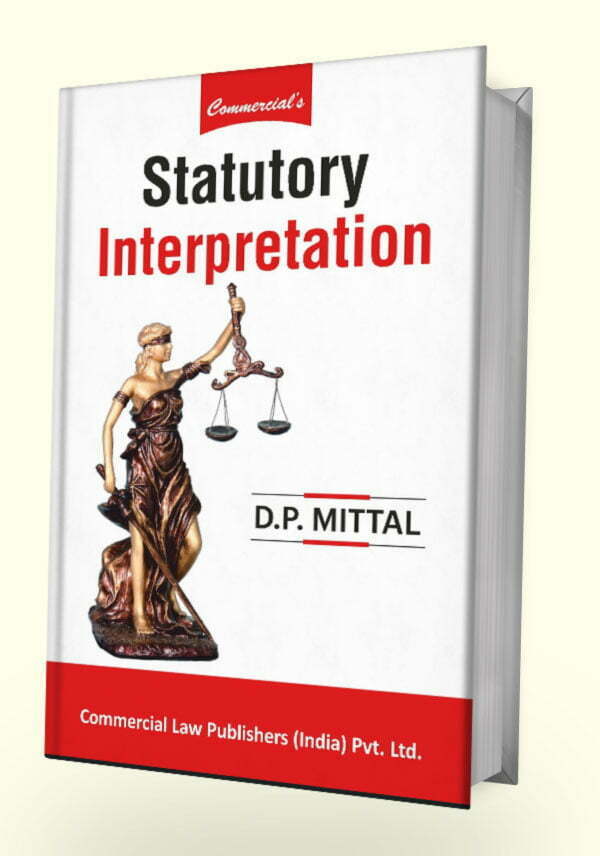
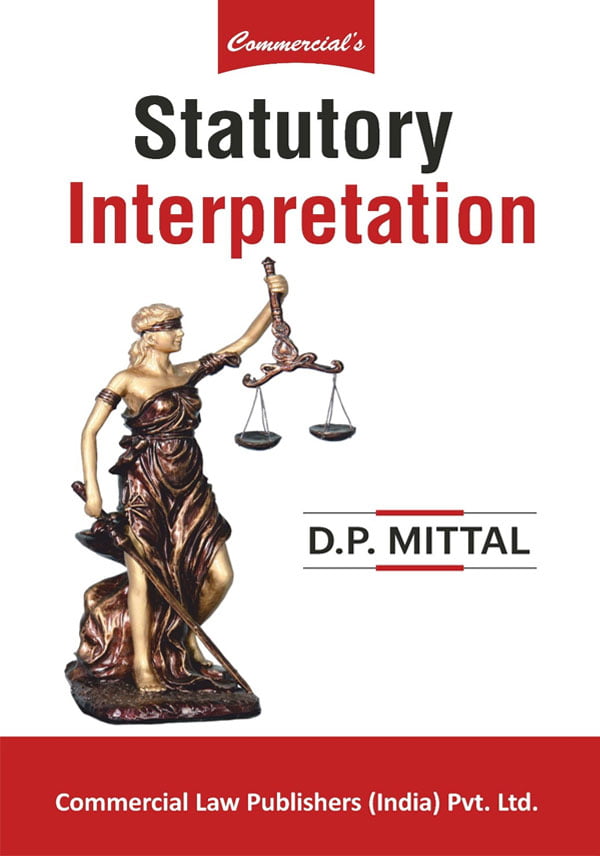
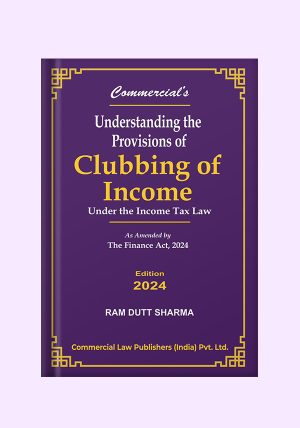

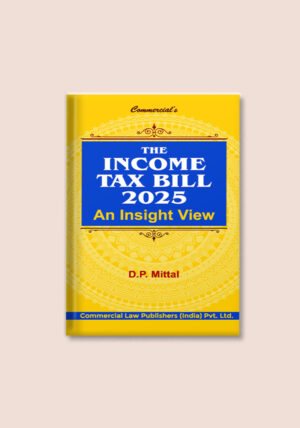


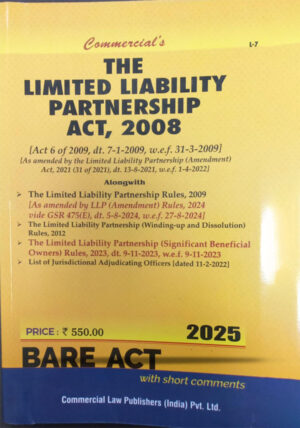
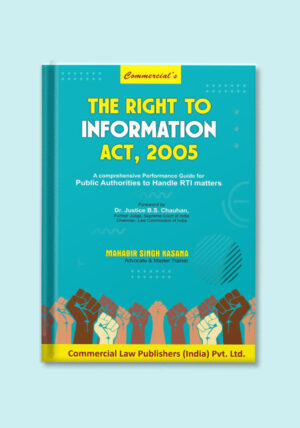
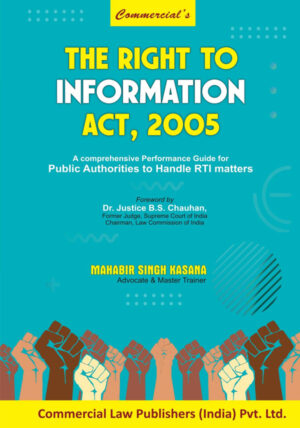




Reviews
There are no reviews yet.